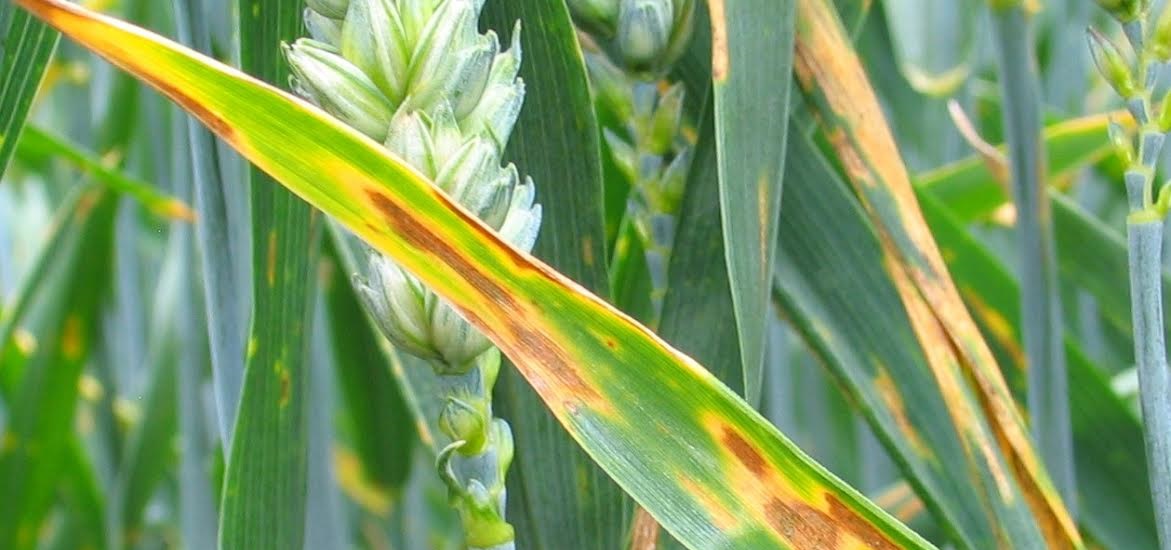
Consider the role that fungicides play in reducing the impact of weather and variety on yields says Dr David Ellerton, Hutchinsons Technical Development Director.
“One of the key challenges that yields face is the impact of weather - solar radiation, temperature and rainfall - and the effects of disease when weather conditions are conducive to disease development.”
Whilst there is nothing that can be done about the weather, it is possible to reduce the impact of disease when conditions are challenging by using an appropriate fungicide programme, thereby reducing any further yield losses, he says.
“We know that wheat yields have plateaued since the late 1990’s – if this had not happened we would be looking at average yields of 9 -10t/ha however in 2011/2012 we saw yields drop down to less than 7t/ha, and this was largely the effect of a dull, wet summer.“
“The dull wet conditions gave rise to high disease levels, and we saw some of the highest levels of septoria since the mid 1980’s, whilst fusarium hit an all-time high with almost 96% infection of samples. Yellow rust bubbled away in the background affecting more susceptible varieties such as Oakley and Torch, and there was also a massive explosion of brown rust later on in the season.”
However, Dr Ellerton points out that during 2011/2102 across all of the 16 Hutchinsons Regional Technology sites, the average response to fungicides was 2.77t/ha or 44%, despite a low mean treated yield of 9.02 t/ha, so even in a low potential year, the positive effect from fungicides on yield was significant.
“Looking more recently at the summer of 2013/2014, conditions could not have been more different to those in 2011/12; sunshine levels were well above the 30 year mean at the important times in the yield forming cycle, April and June/July. It was also wet and mild so crops had good growth but conditions were also ripe for disease. Recorded septoria levels in 2014 were the highest in 15 years according to the Defra winter wheat disease survey,” he adds.
The mean varietal response to fungicides over all the HLH Regional Technology Centres sites in 2013/14 was 3.28t/ha, a 36.9% benefit, with a mean treated yield of 12.18t/ha, showing that crops made good use of the sunshine. At our Ludlow site, which is on fertile soils but had severe disease challenges, this response was particularly high; the average response to fungicides was 6.77t/ha a 95.2% positive response and an exceptional treated yield of 13.88 t/ha – showing that where there was good control of disease, plants could make yield.
Dr Ellerton believes the best way to help crops make the most of the available sunshine this coming season is to adopt a protectant approach when planning fungicide programmes. This means that the early sprays are very important.
“We have seen a drop away in the curativity of the triazoles over the last decade, and although the SDHI fungicides offer some eradication of Septoria they do not have the level of curative action that the triazoles did 15 years ago, so it is important to adopt a protectant approach with the aim of keeping the septoria levels down from the very beginning at T0 and T1 - this means that come the flag leaf spray you are not trying to beat back disease.”
“In fact, the results of some recent trials that we have carried out have shown septoria activity and good yield responses from an autumn/early winter protectant spray, so keeping septoria at bay even this early can have positive effects, and this is something we will be looking closely at again this year.”
Fungicides not only protect the leaves from disease but also have physiological effects on the plant that also impact on the final yield, even when disease levels are low, he points out.
“Whilst strobilurin use waned when they lost their efficacy against septoria several years ago, they still do a good job against rust and offer positive physiological effects on rooting and greening - and a combination of SDHI’s and strobilurins have been shown to have a direct impact on size, persistence and levels of chlorophyll in the leaves resulting in greater efficiency of light uptake.”
Early application is key to maximising these benefits though he adds.
Choosing the right variety in the first place is also important continues Dr Ellerton. He believes that variety choice needs to be broadened from a tendency to concentrate on the highest yielding varieties on the AHDB Recommended List, to those with better disease resistance.
“This means that a spread of varieties can be drilled as a risk management strategy; those with lower resistance ratings can be prioritised at spraying leaving some leeway for the varieties with higher disease ratings thereby optimising spray timings to get the most benefit from your fungicides.”
